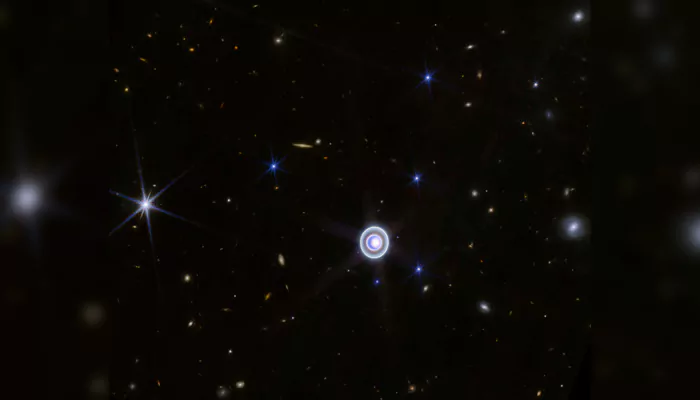
Here are today’s most important updates from the realm of Science and Space.
A European Space Agency (ESA) project is assessing the viability of growing so-called lab-grown food in the low gravity and higher radiation in orbit and on other worlds. ESA is funding the research to explore new ways of reducing the cost of feeding an astronaut, which can cost up to £20,000 per day. Lab-grown food will be essential if NASA’s objective of making humanity a multi-planetary species were to be realised. Lab-grown food involves growing food ingredients, such as protein, fat and carbohydrates in test tubes and vats and then processing them to make them look and taste like normal food.

New research from Drexel University’s College of Arts and Sciences has uncovered a fascinating hidden trait in Long-eared Owls: their feathers contain fluorescent pigments that glow under ultraviolet (UV) light, revealing a secret spectrum invisible to the human eye. This discovery suggests these glowing feathers might serve as a covert form of communication among owls. Using a fluorometer, a device that measures fluorescence, the team detected varying levels of fluorescent pigments, primarily porphyrins in the owls’ inner wing feathers. Interestingly, the fluorescence is more intense in females and older birds, challenging the common assumption that bright plumage is a male trait used solely for mating.

An international team of astronomers observed a rare stellar occultation event, where Uranus passed directly in front of a distant star about 400 light years from Earth. This celestial alignment, visible only from Western North America, provided a unique opportunity to study the atmosphere and rings of the ice giant in unprecedented detail. During the occultation, Uranus’ atmosphere refracted and gradually dimmed the starlight before completely blocking it, then reversed the process as the star reappeared. This produced a “light curve” that scientists analysed to measure temperature, density, and pressure at multiple altitudes within Uranus’ stratosphere, the planet’s middle atmospheric layer. Uranus, nearly 2 billion miles from Earth, is classified as an ice giant due to its interior of water, ammonia, and methane fluids with low freezing points.
An incredible view of a dust storm charging south across Mexico. pic.twitter.com/pYVajCbbs0
— CIRA (@CIRA_CSU) April 21, 2025
A massive dust storm that swept across northern Mexico, impacted 15 municipalities and caused hazardous conditions throughout the region. The Cooperative Institute for Research in the Atmosphere (CIRA) captured striking timelapse satellite imagery of this powerful event as it advanced southward, providing a rare and detailed view of the event from space. The dust storm, which began in the late afternoon and continued into the early hours of April 20, created murky skies and significantly reduced visibility. These storms not only disrupt daily life but also highlight the ongoing challenges posed by dry conditions and climate variability in the southwestern United States and northern Mexico.